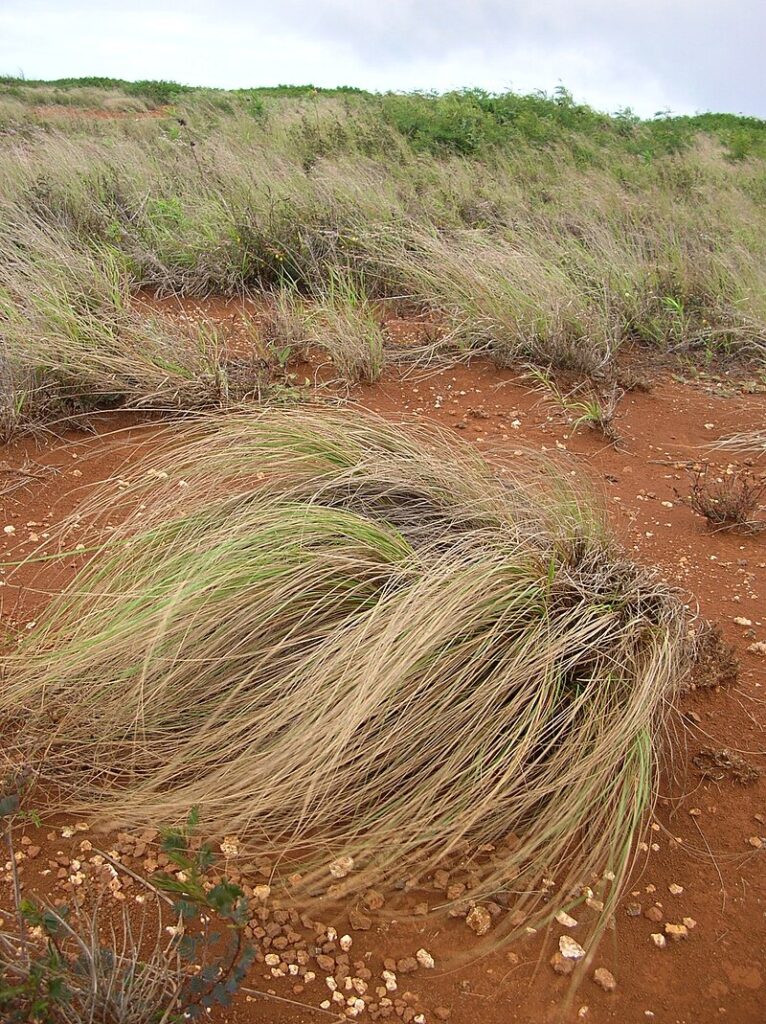Western Sahara
Grasses
Aristida, Eragrostis, Panicum

General Description / Cultural Significance
Despite the harsh, arid climate, these grasses exhibit remarkable drought tolerance, largely due to their deep and extensive root systems. These roots allow them to access underground water reserves while minimizing moisture loss from the surface so they can thrive in nutrient-poor soils. Their fibrous leaves, often narrow and tough, help reduce transpiration and withstand desiccation. Additionally, many of these grasses have evolved specialized adaptations, such as a waxy coating on their leaves, which not only prevents excessive water loss but also serves as a protective barrier against the scorching heat of the Northwestern African sun. Some species even engage in dormancy during prolonged drought periods, reviving with the slightest rainfall.
In the Western Sahara and its surrounding regions, these resilient grasses play an essential role in sustaining both the environment and human livelihoods. They serve as a primary source of forage for grazing livestock, particularly camels, goats, and sheep—animals that are deeply integrated into the pastoral traditions of the region’s inhabitants. Without these hardy grasses, livestock would struggle to find sufficient nourishment, directly impacting local food security and economies. Beyond their practical significance, these grasses contribute to the landscape’s visual and ecological integrity. Their presence amid the vast, wind-sculpted dunes represents endurance and adaptation, reinforcing their cultural and even spiritual symbolism. To many, they are a testament to the delicate balance of life in the desert, embodying both resilience and the profound connection between the land and its people.
Climate Change / Conservation Status
While their specialized anatomy allows grasses to stay alive through extreme dry heat, the main concern at this point is overgrazing. As livestock populations grow and the region’s heavy reliance on pastoralism persists, erosion and desertification, once thought to be imminent, are being reconsidered due to increasingly extreme weather events greening the grasses.
Alternate Names
Wiregrasses
Speargrasses
Needlegrasses
Lovegrasses
Switch Grass
Sources
Bocksberger, Gaëlle, et al. “Climate and the Distribution of Grasses in West Africa.” Eva.Mpg, 2016, www.eva.mpg.de/documents/Wiley-Blackwell/Bocksberger_Climate_JVegScience_2016_2259360.pdf.
Peer, Ronald Franciss, and Jeffery Allman Gritzner. “Plant Life in Sahara: Physical Features.” Encyclopædia Britannica, Encyclopædia Britannica, inc., 7 Feb. 2025, www.britannica.com/place/Sahara-desert-Africa/Plant-life.

